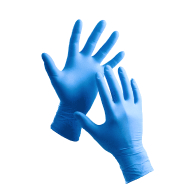Sir Safety System Nordic Star Ankle High Shoe Black
Product description
Product Features:
- Ankle high shoe with FitGO fast lacing system
- Water-resistant design
- Thinsulate padding (200 grams)
- Glass fibre toecap
- Antistatic insole
- Composite puncture-resistant midsole (4 mm thickness)
- Dual-density sole (PU/Rubber)
- Hydrocarbon-resistant outsole
- Non-slip in wet conditions
- Anti-twist features for uneven terrain
Technical Details:
Upper:
- Full grain leather
- Ankle band in full grain leather
- Water-resistant suede leather tongue
Lining:
- Polyester mesh with WR membrane in PFTE
Insole:
- PU foam coupled with mesh fabric
Sole:
- Inner part: Wide cell polyurethane with high memory effect
- Outsole: Black/grey nitrile rubber with deep grooves
- Grey inserts with greater density and hardness
Standards:
EN ISO 20345 S3 WR AN CI HI HRO SRC
Measured in kilograms, indicating how heavy the footwear is. Lighter shoes reduce fatigue during long shifts, while proper weight ensures adequate protection.
The color of the shoe's bottom surface that affects visibility in low-light conditions, complements uniform requirements, and reflects personal style preferences.
The method used to secure the shoe to your foot, affecting ease of putting on/removing, adjustability for comfort, and workplace safety.
The interior fabric that touches your foot, affecting comfort, moisture control, and temperature regulation during long work shifts in demanding environments.
Indicates whether the footwear has protective reinforcement (Safety) or no special toe protection (Plain), affecting workplace safety compliance and injury prevention.
Reduces impact on feet and joints, lessening fatigue during long hours on hard surfaces. Provides enhanced comfort for demanding work environments.
Enhances stability on slick surfaces, reducing the risk of slips and falls. Designed for reliable grip and secure footing in various work environments.
Indicates the shoe's exterior color, which may align with workplace dress codes, visibility requirements, or practical concerns about dirt visibility.
Indicates the exterior color of safety footwear, helping you match workplace dress codes while considering visibility and practicality in your work environment.
Identifies the protective material in the toe cap that shields against impacts and compression. Different materials offer varying levels of protection, weight, and comfort.
- Heat & Flame Resistance
- Cold Protective
- Slip Resistant
- Water Resistance
Request a free sample
Test first and buy later. Visit any product page to request your free sample.
Standards and labels
Test results
General Requirements CIThe CI designation in the standard EN ISO 20345:2011 refers to the insulation performance of footwear against cold. This specification indicates that the footwear offers insulation against cold conditions, protecting the wearer's feet from low-temperature environments. The test method for determining this involves measuring the temperature decrease inside the footwear when exposed to cold conditions over a specified period. This performance is crucial for footwear used in conditions where exposure to cold is significant, ensuring safety and comfort for the wearer in such environments. The practical implications for safety footwear in this category include enhanced worker safety and performance in cold climates, applicable to industries such as construction, cold storage, and outdoor operations in winter conditions.
General Requirements HIThe General Requirements HI result in the standard EN ISO 20345:2011 indicates that the footwear has been evaluated for insulation against heat. This particular result implies that the footwear can offer a certain level of protection against heat, ensuring that the user's feet are insulated when exposed to high temperatures. The test for this requirement involves assessing the footwear's capacity to provide insulation from heat under controlled test conditions. Given the practical implications, this result suggests that the footwear is suitable for environments where exposure to heat is a significant factor, such as in foundries or steel mills, thereby safeguarding the wearer’s feet against thermal risks. This is crucial for procurement professionals when considering safety footwear for sectors where heat resistance is paramount, ensuring compliance with safety regulations and protective performance criteria.
General Requirements HROThe HRO result listed in the standard EN ISO 20345:2011 pertains to the heat resistance of the outsole of safety footwear. This test result confirms that the outsole is capable of withstanding exposure to high temperatures without degrading its physical properties and performance. The test method requires that the outsole of the footwear be exposed to 300°C for a minimum of 60 seconds under specified conditions, during which the outsole should not melt or crack, ensuring that it continues to provide protection against hot environments. Since the HRO classification attests to heat resistance, this feature is particularly important in industries such as metallurgy or construction, where contact with hot surfaces is a common hazard. Understanding this result can assist procurement professionals in sourcing appropriate safety footwear that meets the required durability and performance in high-temperature working conditions.
General Requirements WRThe standard EN ISO 20345:2011 includes various general requirements for safety footwear, among which the WR test result indicates that the footwear has been certified as water-resistant. This test result specifically means that the footwear has successfully passed evaluations confirming its capability to prevent water penetration under specified conditions. The test method involves the footwear being subject to a dynamic water test, where it is exposed to mechanical action in the presence of water for a certain period to simulate wearing conditions in wet environments. The practical implication of this result for safety footwear is significant as it ensures that the footwear provides adequate protection against water ingress, which is vital for individuals working in environments where exposure to water or dampness is frequent. This certification lends reassurance that the footwear will maintain its performance and comfort in challenging wet conditions, thereby improving wearer safety and job performance.
General Requirements CRThe standard EN ISO 20345:2011 encompasses general requirements for safety footwear to ensure they provide adequate protection in various occupational environments. Rating 'CR' signifies that the footwear has a cut resistant upper ensuring enhanced protection. The test method involves assessing the material's resistance to splitting or cracking under certain conditions, which simulates real-world industrial hazards involving sharp objects or surfaces. Practically, this result ensures that the footwear is suitable for environments where there is a risk of materials splitting or getting caught, thereby providing essential safety benefits to the user.
PPE stands for "personal protective equipment." PPE Category 2 refers to equipment that is more complex, and has a higher level of risk. Examples of PPE Category 2 include safety helmets, ear protection, and fall arrest equipment. In Europe, PPE Category 2 must meet certain safety standards set by the European Union, which means that it must be designed and manufactured to protect the user without causing harm. Companies that make or sell PPE must prove that it meets these standards. They also must have a quality management system in place and have to be audited regularly by a notified body.
CE Marking is a label that shows a product meets certain safety and environmental standards set by the European Union. To get the CE Marking, a company must test and certify their product meets these standards. CE Marking is required for many products sold in the EU, including electronics, machinery, toys and medical devices. It helps ensure that products are safe for consumers and the environment, and allows for easy trade within the EU.
SIR SAFETY SYSTEM delivery terms
Free delivery for all SIR SAFETY SYSTEM products
126,57 €
Price per pair
126,57 € / pair
Shipping fee is 6,33 € for orders under 150,00 €
Sold in units of one pair
Need larger quantities?
Other products you may like
Recently viewed
Need help?
Get help from our experts
Other products you may like
Similar products you may like
Recommended for you
SIR SAFETY SYSTEM
Delivery time: 7 business days
Orders from 150,00 €
Supplier shipping fee 6,33 €
Free shipping on orders over 150,00 €



Find +150,000 products from hundreds of brands
Autonomous sourcing platform
The most efficient way to source and order supplies for your operations
Sourcing
Ordering
List products you’re looking for and we’ll find the best products and prices for you – all for free.
Need help?
Get help from our experts
